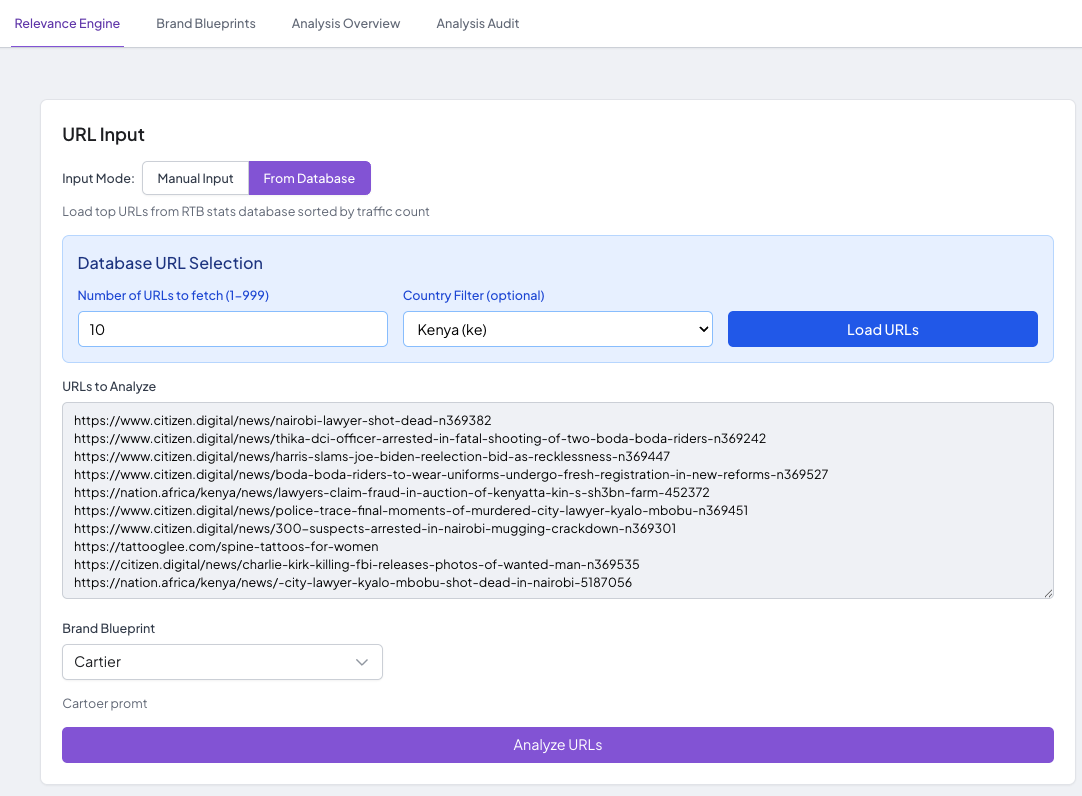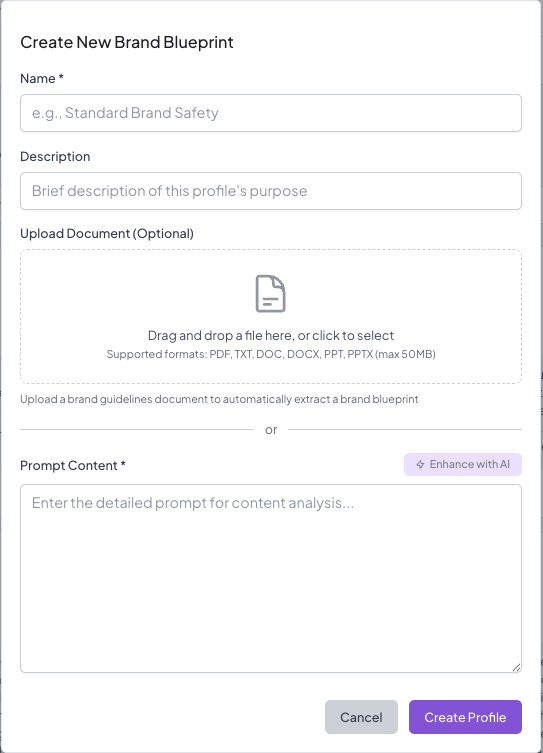Creating a Brand Blueprint
What is a brand blueprint?
A brand blueprint is a prompt based contextual strategy that is used to analyze the content of URLs where a campaign might show, and determine whether it's a match or not. In essence, it's free form text where the user might define the content categories, content sentiment (positive, negative), type of content (news, educational, opinion..) as well as any other attribute of the content of the page that would be relevant for the campaign.
How to create a brand blueprint?
In order to create a brand blueprint you need to follow these steps:
- Make sure you have previously requested a user to our contextual product. Google login alone won't let you access it.
- Once you have been confirmed to have a user, go to contextual.eskimi.com
- Click on "Brand Blueprints"
- Click on the "Create New Blueprint" button, which will open a dialog like the below.
- Add a name which will be what's displayed when selecting Brand Blueprints for targeting
- Add a small description
- If you have any type of client brief or document, you can use the document upload to help you extract the base information out of that file.
- Otherwise you can add your brand blueprint definition into the "Prompt Content" section. In this prompt you can include all sorts of information about what type of content is acceptable or not. It is recommended to leverage Gemini to help you write it.
- You can use the AI Enhancement option in the product as well, but make sure to always review the content and make sure you're satisfied.
- Click on "Create"
How to test a brand blueprint?
Once you have a blueprint, it's important to test it against a sample of URLs to make sure that it works as you expect it to. In order to do that:
- Go to contextual.eskimi.com
- Go to the "Relevance Engine" section.
- Here you can either manually enter URLs, or pull from real URLs from our traffic selecting the "From Database" option.
- When using database URLs, you need to select the amount of URLs, and the country. This will make sure that you only scan locally relevant URLs. Once selected, click on Load URLs.
- Once you have the URLs loaded, you can click on "Analyze URLs" to start the process.

How to interpret the results?
Once you have scanned some URLs, you should go one by one through 5-10 and review the results. Make sure you read the summary, read the AI reasoning and if there is a doubt open the URL itself. The idea is to make sure your brand blueprint classifies URLs correctly. It is equally important to make sure it matches properly, as well as that it doesn't match. If you disagree with a result, read the reasoning and use that to adjust the blueprint. You can use the disagreement function on the results or you can rewrite the blueprint yourself.
What next?
Once you have the blueprint, you're ready to share with the client as part of the proposal and wait for the campaign to be confirmed.

